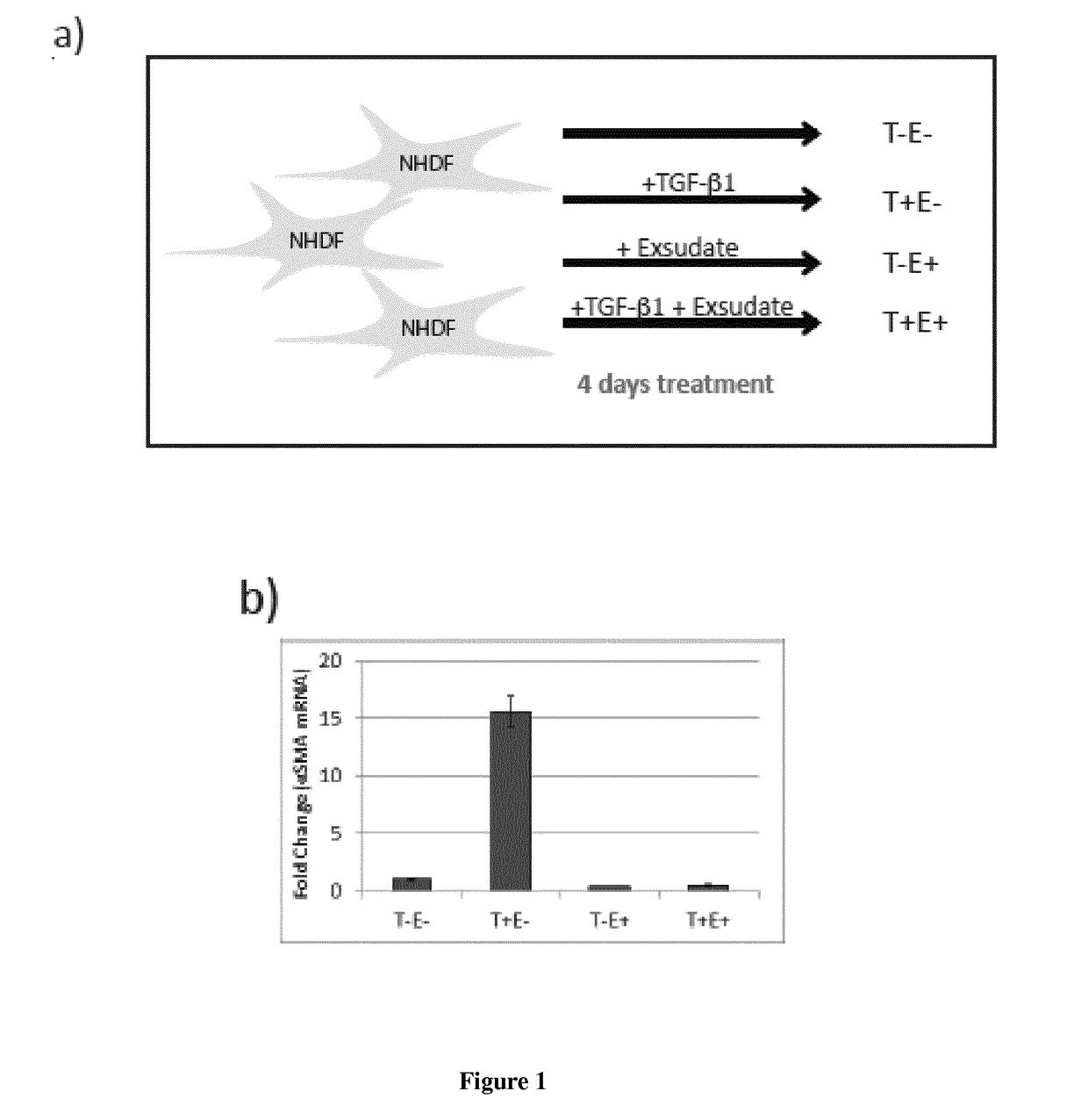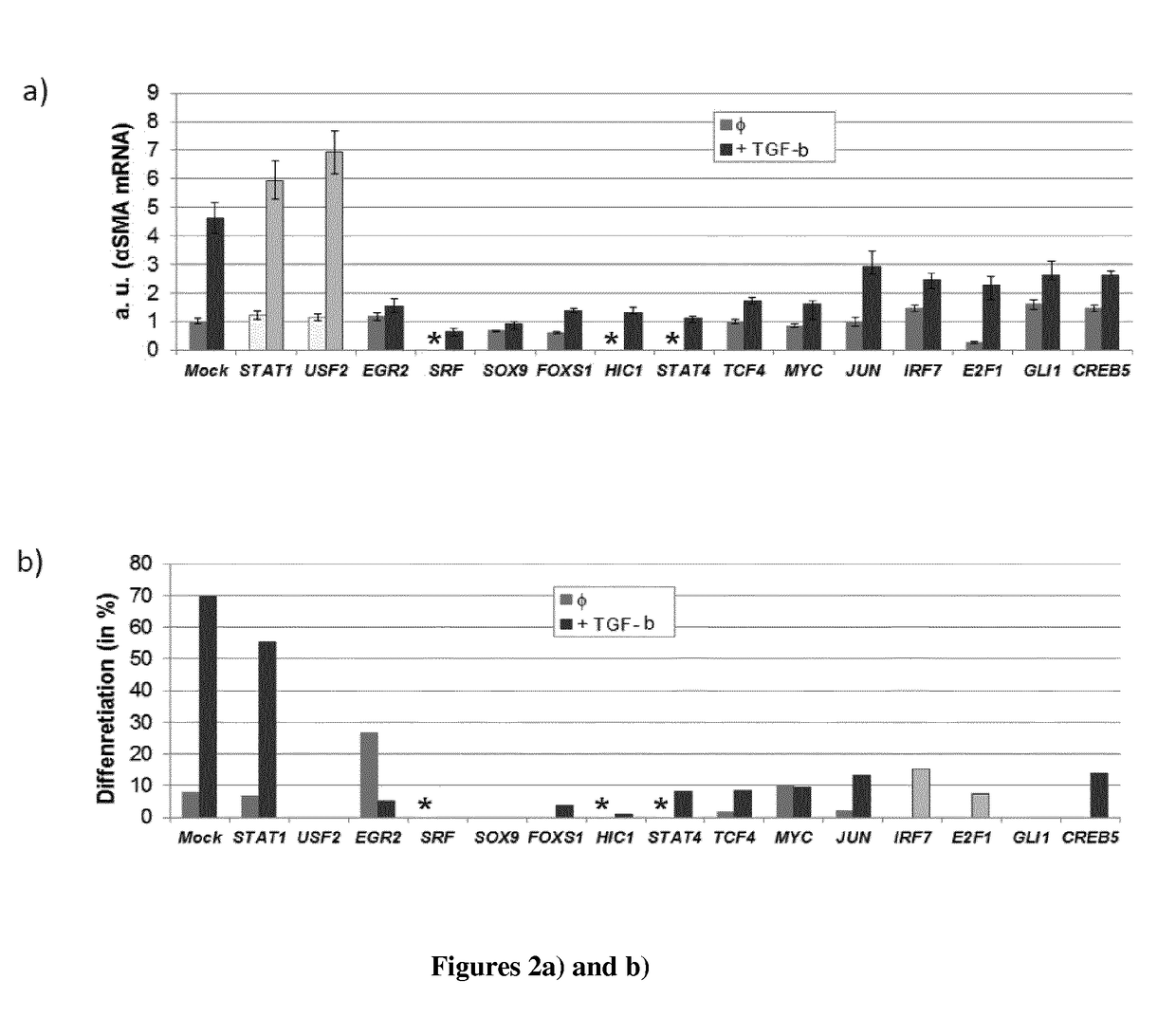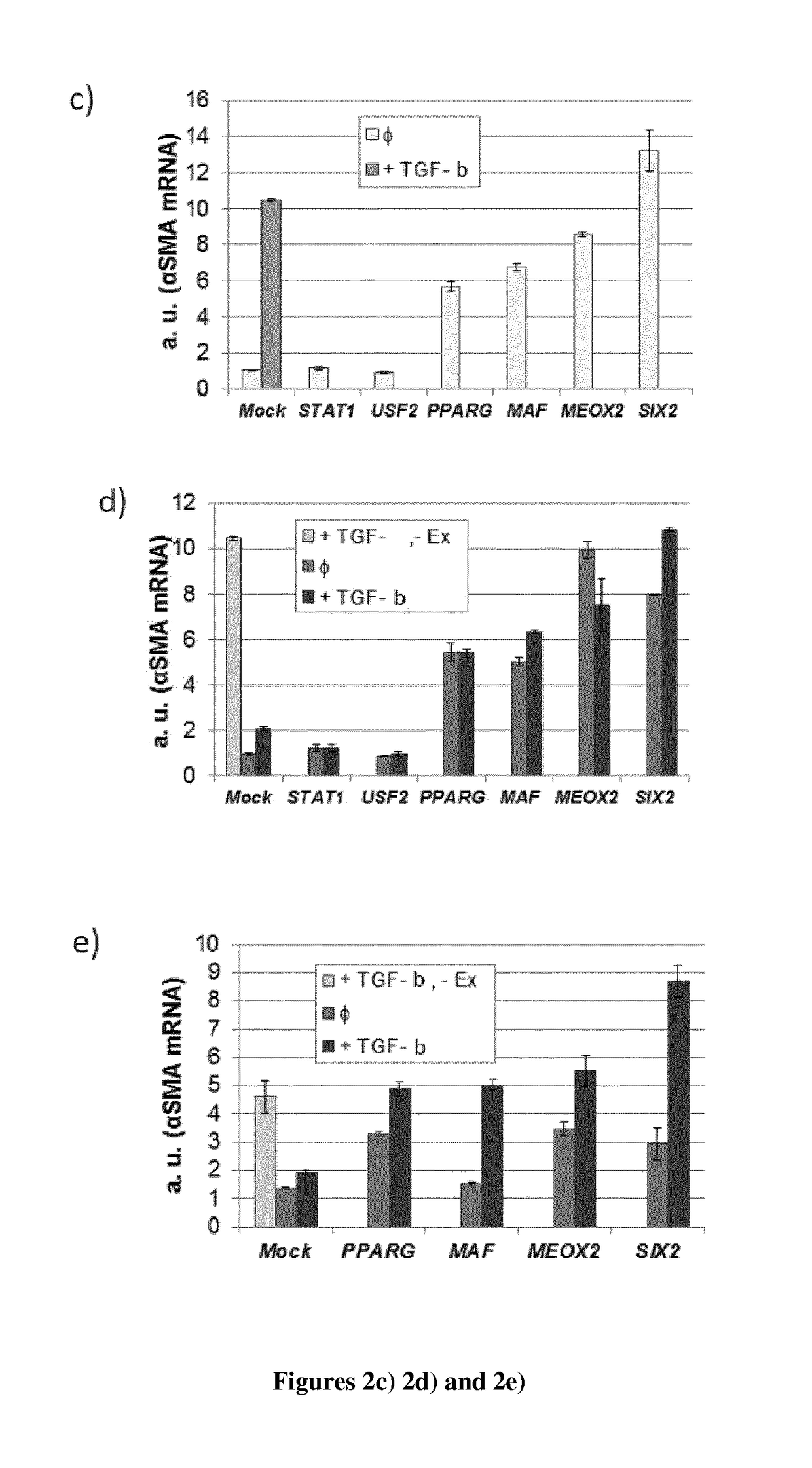Molecular targets for the treatment of wounds, in particular chronic wounds
a wound and molecular target technology, applied in the field of wounds and molecular targets, can solve the problems of chronic wounds, non-healing wounds or abnormal scars, and a worldwide health problem, and achieve the effects of reducing the risk of infection, and improving the quality of li
- Summary
- Abstract
- Description
- Claims
- Application Information
AI Technical Summary
Benefits of technology
Problems solved by technology
Method used
Image
Examples
example
[0128]In response to a lesion, fibroblasts migrate into the wound where they differentiate into contractile myofibroblasts that will finally enter into apoptosis during the remodeling phase. This differentiation process can be studied ex-vivo in environmentally controlled tissue culture conditions, and therefore the timely controlled succession of different gene expression patterns can be addressed.
Materials and Methods
Establishment of an Ex Vivo Model of Chronic Wounds
Normal Dermal Fibroblast Cell Culture and Exudate Collection
[0129]NHDF, isolated from human explants, were purchased from Promocell. NHDF were cultivated in DMEM-F12 (Invitrogen), supplemented with 10% FCS (Invitrogen, 5 μg / mL of insulin and 1 ng / mL of b-FGF (PromoKine)).
[0130]To collect exudates, two patients with mixed ulcers were recruited. For patient selection, it was decided to exclude any other comorbidity factor potentially involved in wound etiology: diabetes, peripheral arterial diseases, malnutrition. Exuda...
PUM
| Property | Measurement | Unit |
|---|---|---|
| time | aaaaa | aaaaa |
| time | aaaaa | aaaaa |
| pharmaceutical composition | aaaaa | aaaaa |
Abstract
Description
Claims
Application Information
 Login to View More
Login to View More - R&D
- Intellectual Property
- Life Sciences
- Materials
- Tech Scout
- Unparalleled Data Quality
- Higher Quality Content
- 60% Fewer Hallucinations
Browse by: Latest US Patents, China's latest patents, Technical Efficacy Thesaurus, Application Domain, Technology Topic, Popular Technical Reports.
© 2025 PatSnap. All rights reserved.Legal|Privacy policy|Modern Slavery Act Transparency Statement|Sitemap|About US| Contact US: help@patsnap.com



